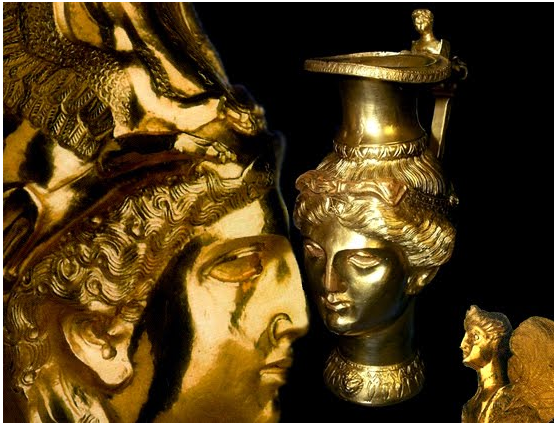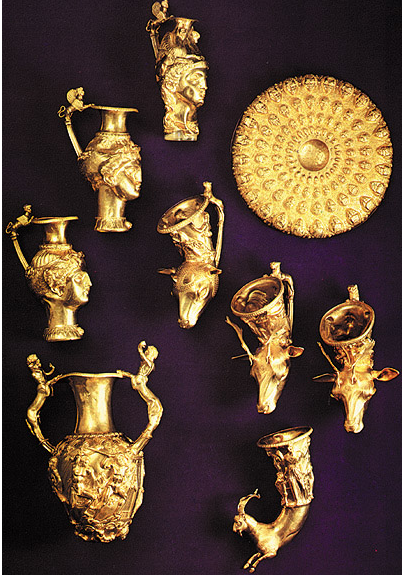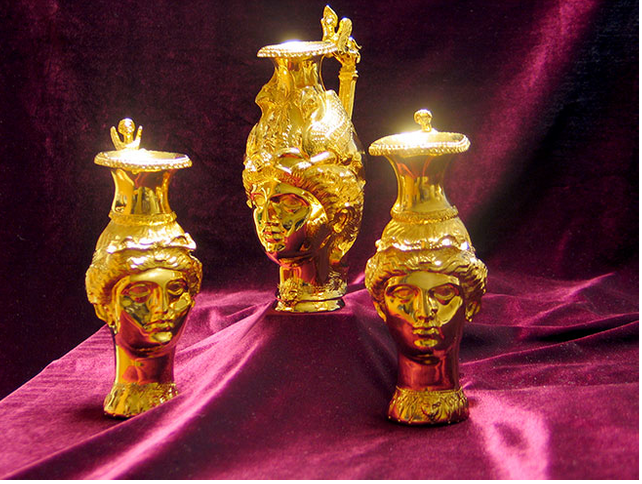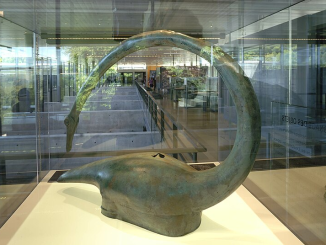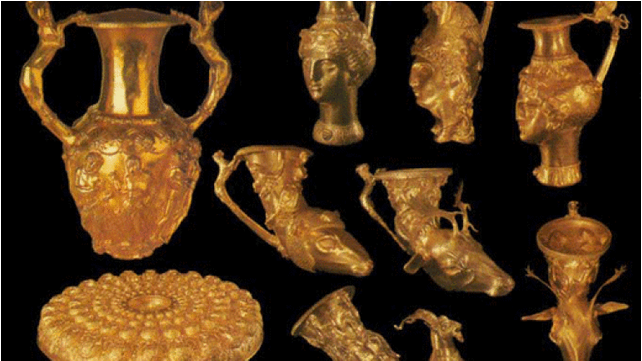
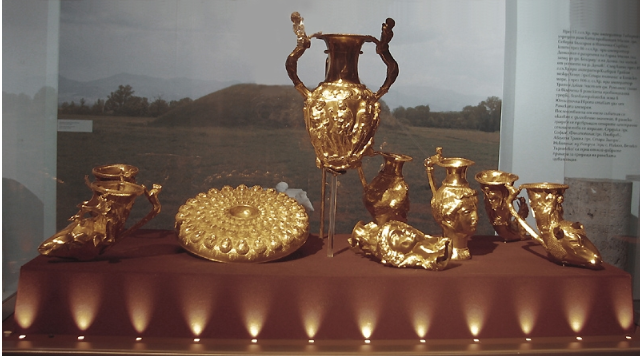
The objects of the Panagyurishte treasure are completed as an extremely rich and high artistic value service for ritual gifts. They are of particular importance for the study of the Thracians and their way of life, their ties to Hellenistic culture and similar beliefs.
After the study of the vessels, the archaeologists came up with several hypotheses about the origin of the vessels. The more popular are two: The first is that the objects were made in the town of Lambsak, an Hellenic colony located on the southern coast of the Black Sea in today’s Turkey. And the second hypothesis that has recently begun to prevail after the archaeological discoveries in Bulgaria in recent years and the high craftsmanship in the fabrication of the objects found is that the workshop was made in a local goldsmith’s studio located in the Panagurishte region.
Who was his owner? Could it have belonged to any of the Odrys kings? What made him hide it in the ground? We can not get an exact answer. We can only guess, but that does not prevent us from enjoying the Panagyurishte gold treasure as a priceless, highly artistic and unique witness of antiquity.
